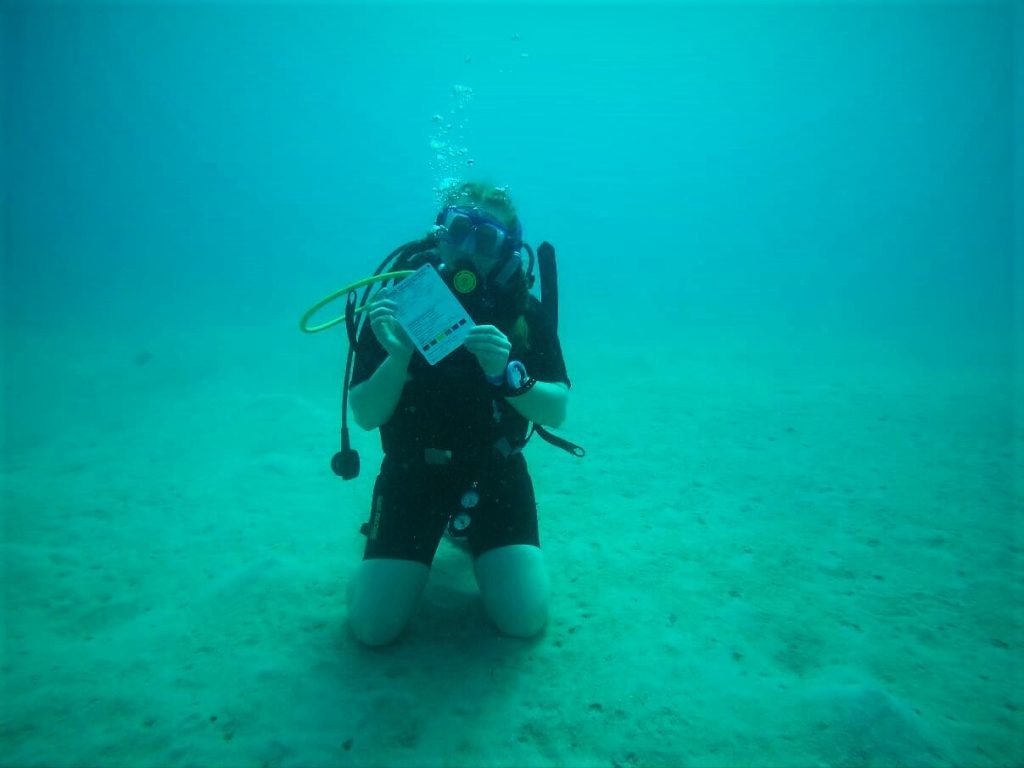My blog entry this week is a bit different; I won’t be talking to you about carnivores!
I recently got back from a 2-week trip to Egypt. A lot of people hear “Egypt”, they think Pyramids and I can understand why. I, however, went for the sea. I was already a PADI Open Water Scuba Diver and thought the perfect opportunity to get my next qualification would most definitely be on holiday with nice warm waters (it just isn’t quite the same when you dive in the UK).
PADI has 25 years of conservation partnerships and utilises the divers certified with them (and their love of the ocean) to spread awareness, educate, protect and be active ocean guardians, so I knew as long as the dive centre was PADI registered I could be confident in knowing that it would be ecologically mindful. I chose one of the best dive sites in the world – the Red Sea.
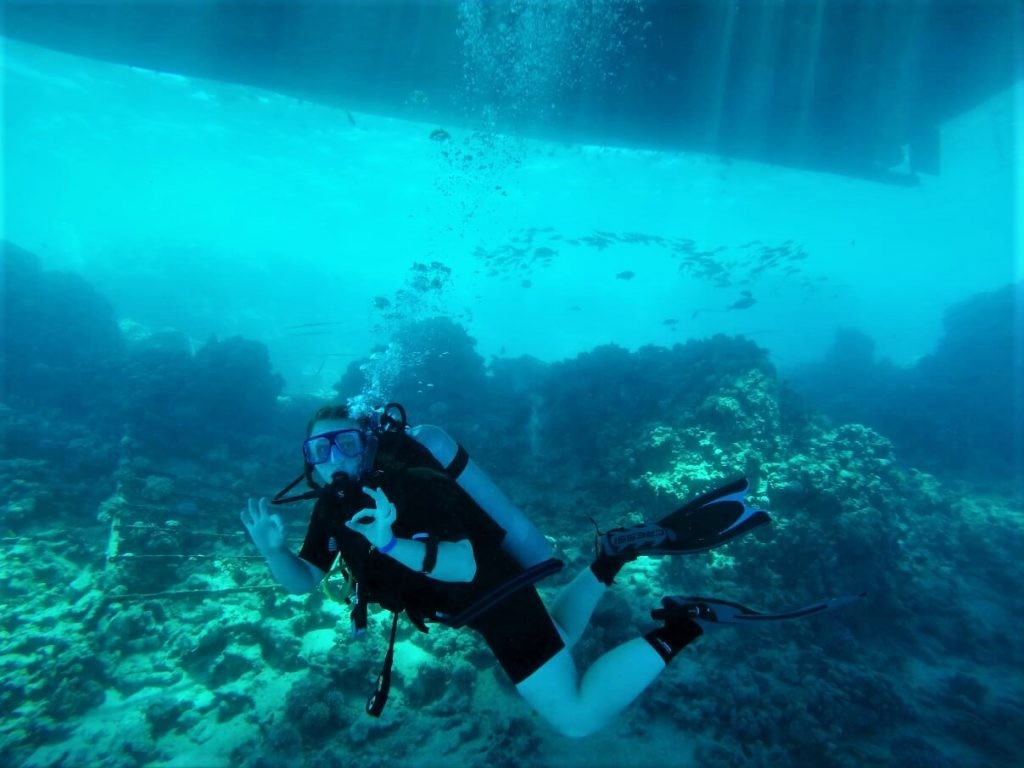
The Red Sea
The Red Sea lies between Africa and Asia and is highly biodiverse. It’s home to 1,200 species of fish alone, not mentioning the high numbers of marine invertebrates and coral species! The abundance of coral in the area is what makes it a fantastic place to visit if you enjoy marine life, especially sharks (44 species of which are known to inhabit the red sea). There is roughly around 2,000km of coral reefs in the red sea, all approximately between 5,000- 7,000 years old. There are other notably important marine habitats in the red sea including sea grass beds, salt pans, salt marshes and mangroves.
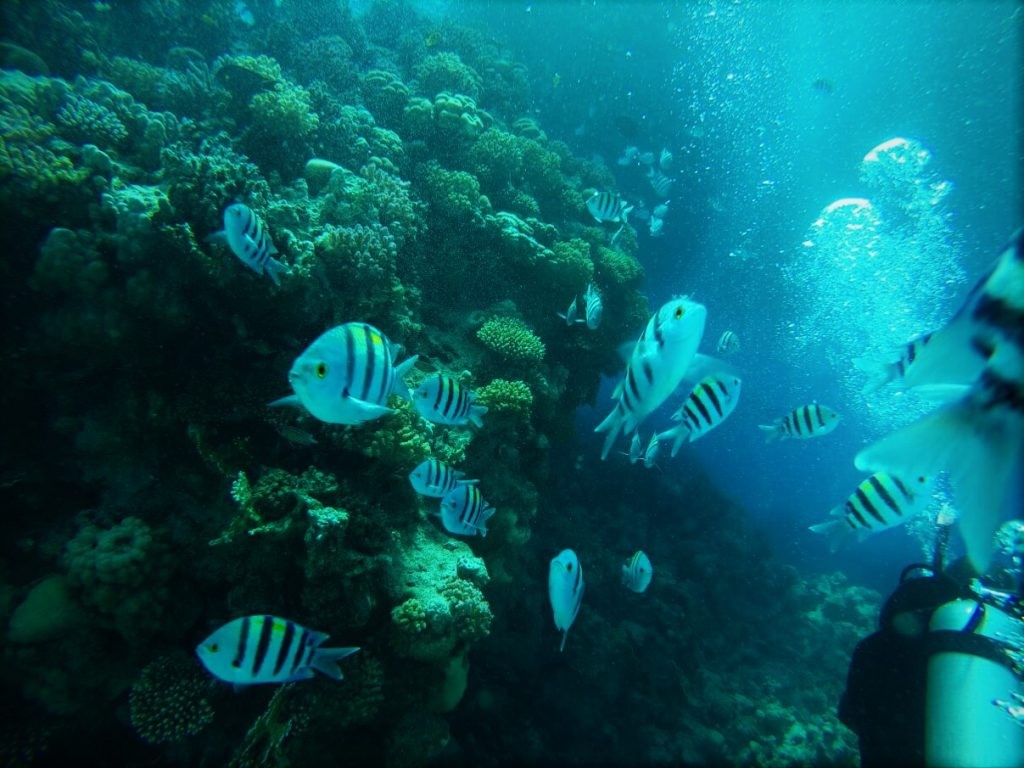
Coral reefs
Coral reefs are crucial to ocean life and ultimately, the functioning of our planet. These “rainforests of the sea” are some of the most diverse ecosystems on Earth, providing homes for at least 25% of all marine species, but only occupying less that 0.1% of the world’s ocean area. Not only are they biodiverse ecosystems, coral reefs are worth a hell of a lot to us humans as well, providing opportunities for ecotourism, sustaining fisheries and offering shoreline protection.
Annually the economic value of coral reefs is estimated at US$30-375 billion. But, our coral reefs are dying out at an alarming rate. Pollution, overfishing, blast fishing, disease, invasive species, overuse by humans, and sea temperature rises are all some of the major threats affecting the Earth’s coral but there are many more.
Coral bleaching is probably one of the most heart wrenching things to see and it’s leading cause is our changing climate and warmer oceans. Coral bleaching is basically when the coral gets rid of the algae that live inside their tissues, causing it to turn white. The algae is crucial for the life and health of the coral as it provides up to 90% of its energy. Once bleached, corals will slowly begin to starve and most die off completely – along with all the other organisms that rely on the coral reef too. Not all corals die though, and there are huge conservation efforts to try and save coral reefs around the world and prevent these increasingly common bleaching events.
What I saw whilst diving
If you have never been scuba diving before, and have a love for the ocean, do it! There is nothing else quite like it; the sound of the water and of yourself breathing is all there is, couple that with some absolutely fantastic sights it is both relaxing and exciting all at the same time.
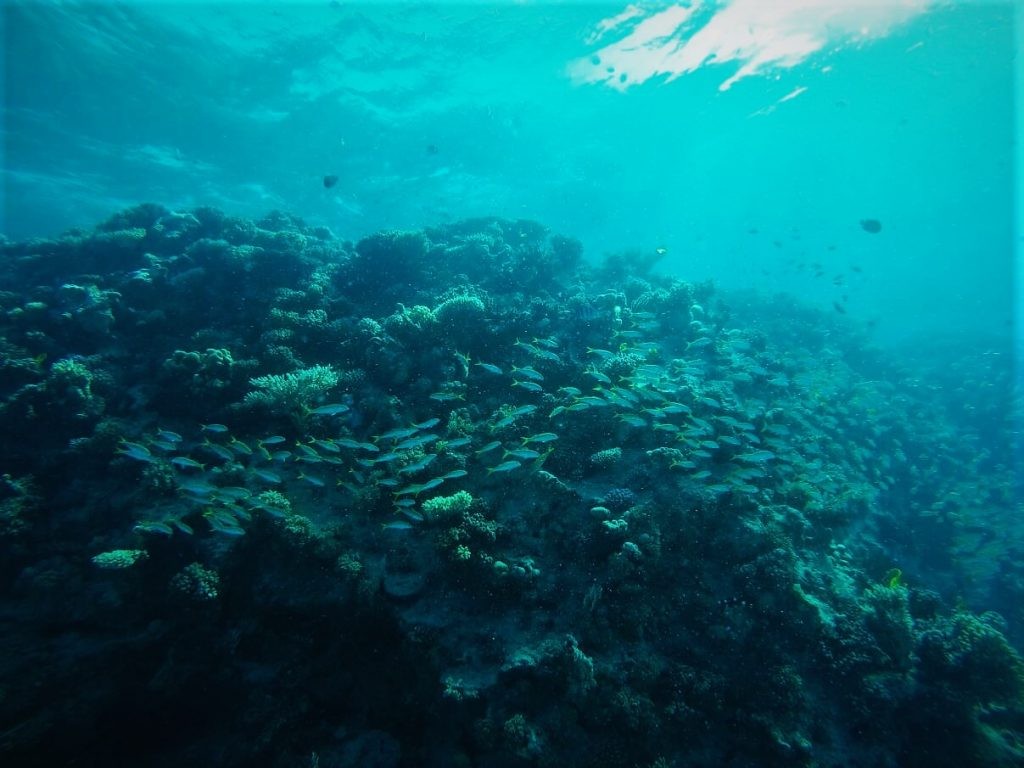
The dive sites I visited were all coral reefs, with two sites that were sea grass beds/ sand, depending on what species we wanted to see. I would not have enough time or space to write down everything I saw, so I’ve managed to narrow it down to the top 6 most interesting or impressive (don’t worry I’ve saved the best until last). All photos and videos were shot on my GoPro, so excuse the shakiness whilst I was swimming!
#6: Stonefish (Synanceia sp)
I actually saw two types of stonefish, the red variety, that was a bit bigger are called scorpionfish. All members of the Stonefish family are venomous (even fatal) to humans! That being said, we did not venture close at all. They are super hard to spot, I have no idea how our guide spotted them; you can see from this photo just how well they camouflage into the coral, and rocky areas of the reef- hence the name!
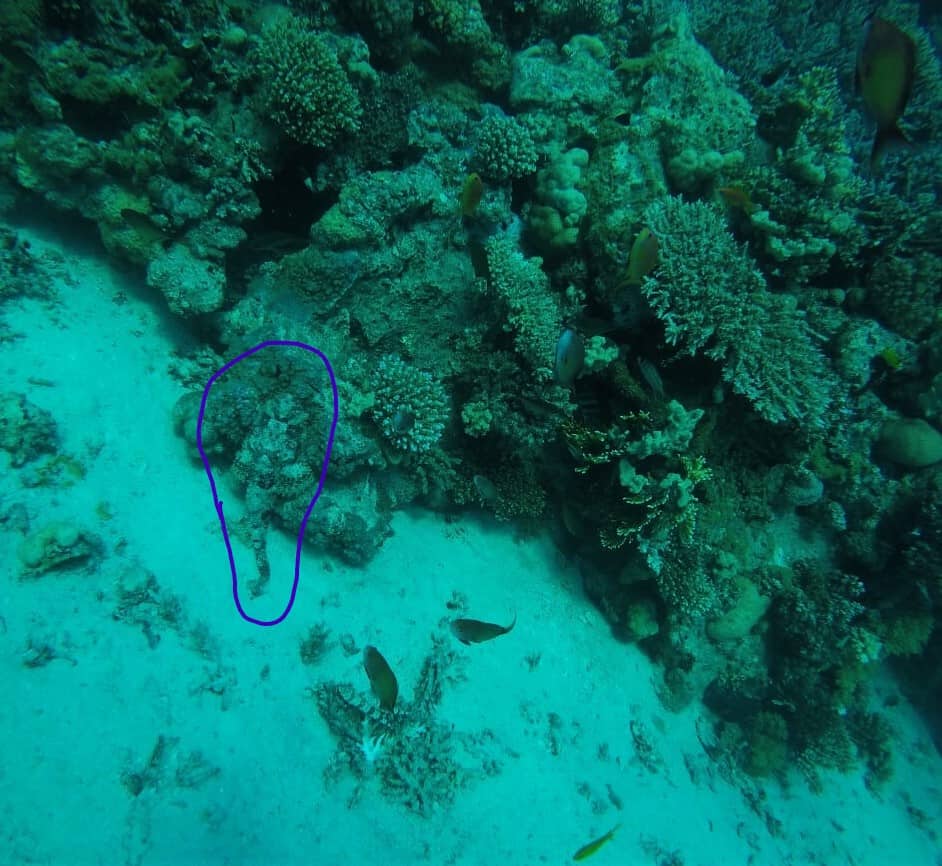
#5: Crocodile fish (Papilliculiceps longiceps)
Crocodile fish are closely related to the above mentioned stonefishes. They are bottom dwellers, and like their relatives, have excellent camouflage in order to sneak up on their prey. Unlike the stonefishes, these tend to be found on the sea floor if its sandy close to reefs. These were one of my favourite species out there, purely because they look so cool (they’re quite big, almost a metre long) and we saw so many of them! In terms of diet, these guys eat any fish small enough to fit in their mouth!
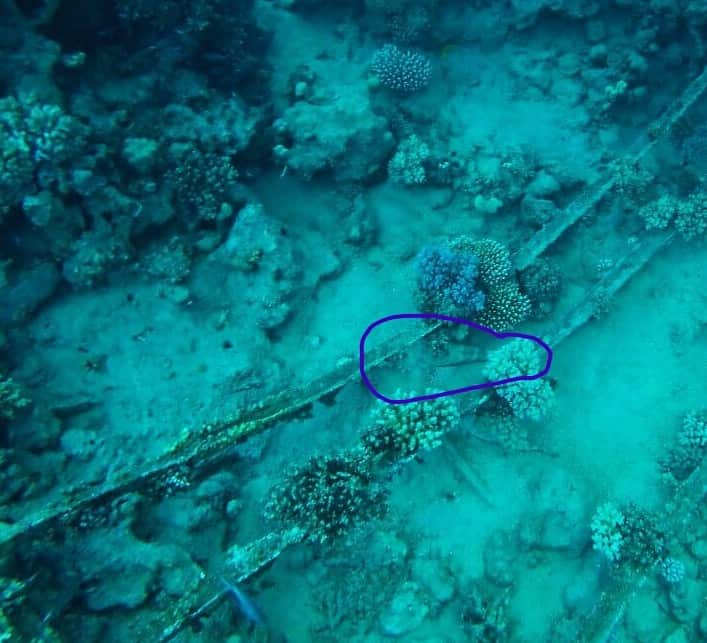
#4: Lionfish (Pterois miles)
This fish is so impressive! Like the crocodile fish, we saw quite a few of these on most of the coral sites that we visited. There is no denying that they are an absolutely stunning animal with bold red, black and creamy stripy bands; but they are also highly venomous, having 18 projecting venomous spines or tentacles. All species are characterised also by their aposematic colouration; warning colouration that a species uses to indicate that it is toxic to potential predators.
Lionfish are voracious predators, and also highly territorial and aggressive towards other reef fish. These traits have become a problem where this fish has been introduced into other parts of the world where it is not native. They have been described as ‘one of the most aggressively invasive species on the planet’.
There are substantial introduced populations in the Caribbean and the Mediterranean and they are rapidly impacting fish numbers (some figures by up to 80%) and ultimately this could lead to reef deterioration or collapse. Not good news for Caribbean reefs, but I’m so happy I got to see a lionfish in its natural, native habitat!
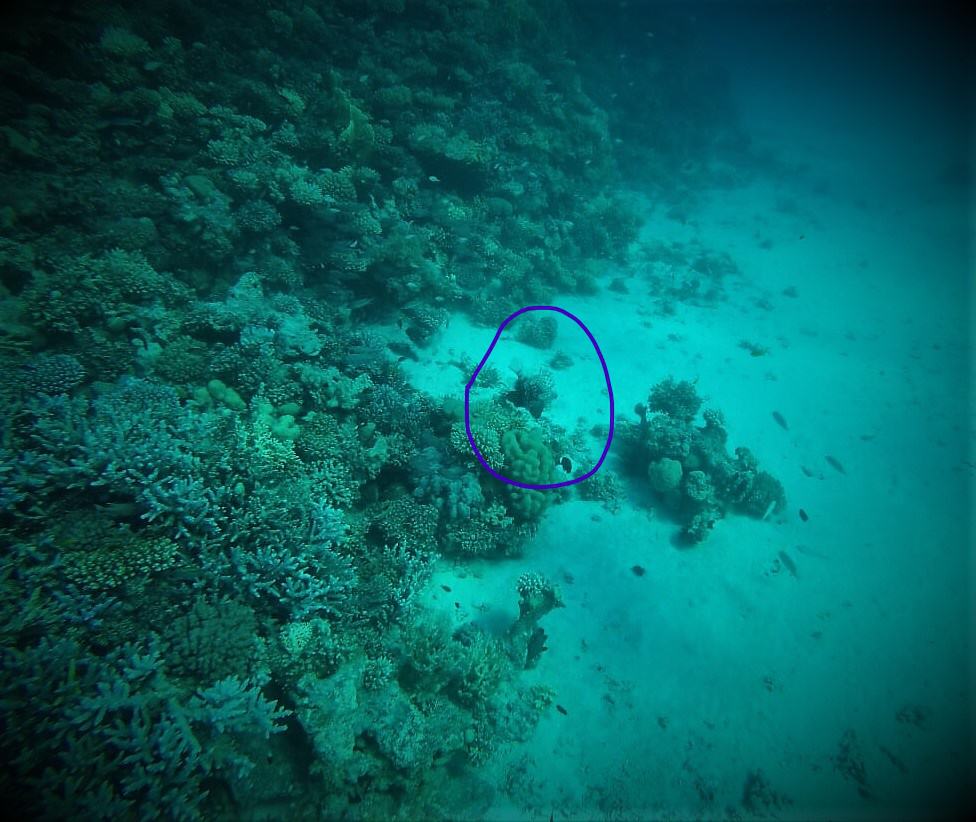
#3: Giant Moray Eel (Gymnothorax javanicus)
I have always wanted to see eels. I have always snorkelled on holiday and have previously been diving in Croatia and I had never seen one. I got my sighting (2) in Egypt. The first one I saw I did not take a photo of; it was HUGE! I also saw it when I was training to do deep dives (to 30 metres) so I was a little distracted and missed the opportunity. That being said, I was super happy when we saw another on the same dive at a slightly shallower depth and managed to get a photo. The first one I saw was bigger than this yellow one, but it was a lot darker, so the photo probably wouldn’t have turned out as well.
Giant Moray eels are the largest species of moray eel, some reaching up to 3m in length (the first one could have easily been this long) and 30kg in weight. They are carnivorous, eating both fish and crustaceans, and have even been identified as a natural predator of lionfish! These guys live in hollows and crevices in coral reefs; overnight they leave these lairs in order to hunt.
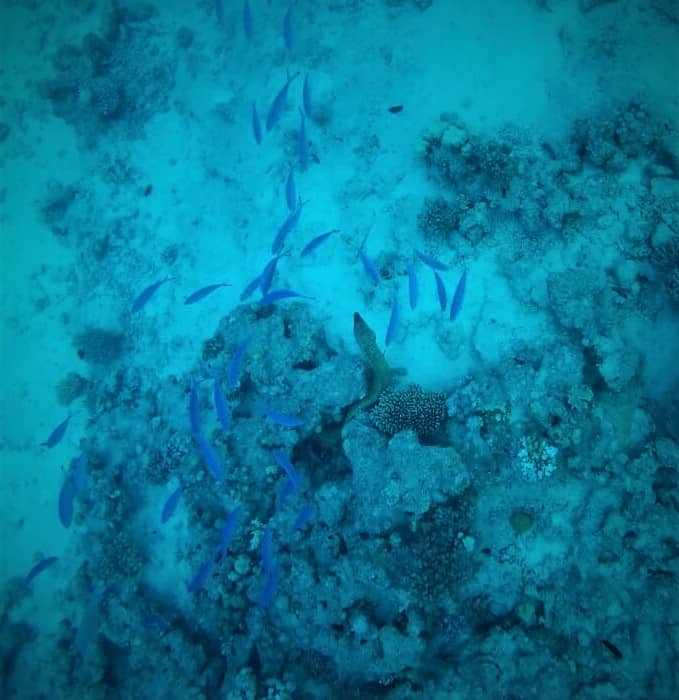
#2: Blue spotted ribbontail ray (Taeniura lymma)
This was one of the most beautiful animals I saw; they are relatively small (35cm in width roughly) and super quick when they want to be. We were lucky enough to see lots of these- the best shots I got were from the coral reef located in the beach of my hotel. These guys feed on small invertebrates and fish on the sea floor and I was able to watch one feeding quite close- it didn’t seem to be bothered by my presence at all.
When threatened these rays do have venomous tail spines to defend themselves but they are much more likely to swim away and hide in the coral or sand. Degradation of its coral reef habitats through its range, mainly from destructive fishing practices, are causing populations to decline rapidly.
#1: Green sea turtle (Chelonia mydas)
I promised I would save the best until last! I was so excited to see these guys. Our dive instructor said he knew of three that actually seemed resident to our hotel’s reef and swims with them regularly. We found two on the reef (surprisingly not on the sea grass meadow), the first was the larger of the two and is the one he is pointing to in the photo- visibility is not great, the current was quite strong that day. This larger one swam off pretty quickly, the other seemed relatively relaxed, did a loop before following its larger friend.
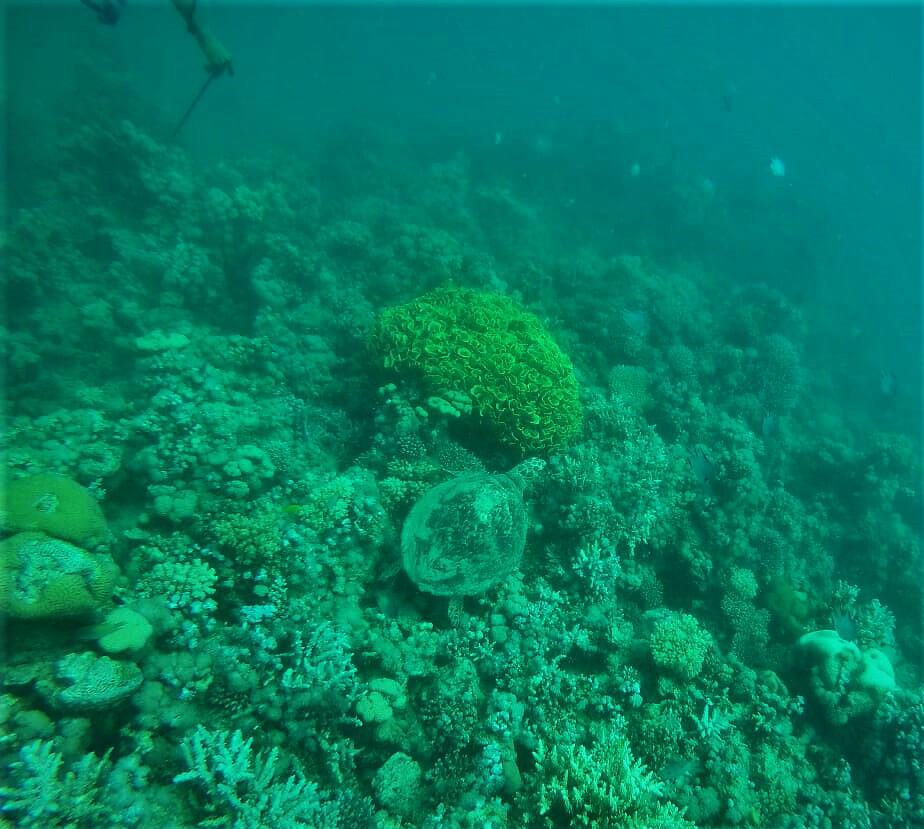
Sea turtles in my opinion are one of the most incredible and emotive species on the planet, especially when talking about our oceans; everyone loves turtles! They are peaceful creatures, with a slow pace to life, feeding on sea grass, jellyfish, algae, invertebrates, molluscs and fish eggs.
Green sea turtles are listed as endangered by the IUCN so it was such a rush to see two in their natural habitat, seemingly very calm with our presence. Human activity though is their main threat; turtles and their eggs are hunted for food, as well as pollution (both industrial and light pollution, which interferes with their nesting behaviour), fishing practices, and habitat loss. They actually have a very important role within their ecosystems, managing sea grass beds plus, interactions between them and other coral reef species (as well as their hatched eggs) provide key nutrients to the beaches on which they nest. So not only are these guys absolutely beautiful they are also incredibly important to the health of our seas, and in turn, our planet.
Learn more about turtles at our sea turtle talk in the Education Centre at 12.00 during the weekends and daily throughout the school holidays. Also remember to visit our Ethnography and Natural History Museum which is home to a number of items including a variety of corals, shells and animal products (such as a dried sea turtle and seahorses) confiscated by H. M. Customs & Excise UK Border Control and given to the park to help us with our education efforts. These items help us to raise awareness about the challenges facing marine life and to educate our visitors about responsible and sustainable tourism.
So that’s just snapshot of what I saw on my Egyptian diving holiday and I am now an Advanced open water diver! I have hopes to return to add more species to my sighting list, maybe some sharks and a dugong (an awesome marine mammal also known as a sea cow). I would recommend diving or even snorkelling to anyone on holiday. A key point to remember is try and do your research on the tour companies to make sure you are going with an environmentally mindful tour operator. Take nothing but pictures, leave nothing but bubbles!
